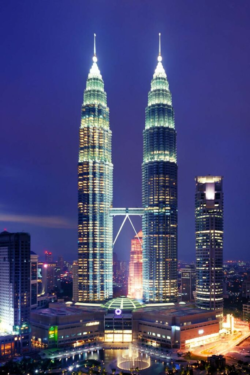Fred Clarke,
FAIA, RIBA, JIA
Senior Principal, Pelli Clarke Pelli
In 1998 the twin Petronas Towers in the Malaysian capital of Kuala Lumpur took the title of "world's tallest building" away from the United States for the first time. The towers’ developers, private investors working with the Malaysian government and Petronas, the national oil company, sought to create a headquarters and a landmark that would establish KL's prominence as a commercial and cultural capital. In the design of American architects Cesar Pelli and Fred Clarke, they found a winning scheme, paired towers of slender proportions and scalloped spires that suggest both Islamic geometries and temple forms.
Like the towers that would proliferate in Asia and the Middle East in the next decade, Petronas was constructed of high-strength concrete, supported by massive core and an outer ring of widely-spaced super columns. In both structural engineering and iconic imagery, Petronas pointed the way to the supertalls of the 21st-century.
The video begins with Fred Clarke's lecture, followed by Q&A with Museum Director Carol Willis, whose introduction to the webinar is included after the discussion.
